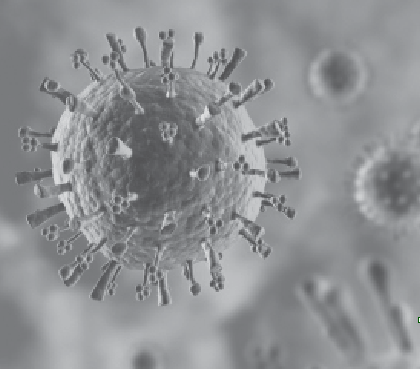SARS, HIV/AIDS, H1N1, and West Nile: these diseases are not just notorious for their human and economic impact; they also share a common trait. All four of these diseases are derived from animals, and they’re only a few of many.
According to the Centers for Disease Control and Prevention (CDC), zoonotic diseases are diseases transmitted between animals and humans. “They aren’t new—the first cases occurred thousands of years ago,” said William B. Karesh, executive vice president for Health and Policy of EcoHealth Alliance. Rabies, while still prevalent today, is an example of an ancient zoonotic disease, he explained. “In addition to these persistent zoonotic diseases, we’re also facing an emergence of novel diseases.”
In a recent study by the CDC, zoonotic diseases were shown to represent 75 per cent of the newly emerging diseases affecting people worldwide. In an effort to identify and respond to them before they spread to humans, the U.S. Agency for International Development (USAID) established its Emerging Pandemic Threats (EPT) program in the fall of 2009. The EPT program consists of four projects: PREDICT, RESPOND, IDENTIFY, and PREVENT.
“What PREDICT is trying to do is get in front of potential outbreaks to find viruses that are at risk of infecting people and prevent them before they become the next pandemic,” Karesh explained.
PREDICT operates globally in 20 countries that are hotspots for disease emergence through an association with U.S.-based organizations including EcoHealth Alliance, UC Davis, Smithsonian Institute, as well as local and international governmental and scientific partners. Karesh explains that in such countries as Bangladesh, Brazil, Indonesia, and Malaysia, disease surveillance is focused on a range of settings to help identify where and how transmission opportunities may occur. For example, it is important to look at free-ranging animals, hunted game, or animals sold in markets.
After scientists collect swabs or small amounts of blood from animals, they analyze the samples in the lab to look for evidence of disease. These findings are catalogued in a database that mathematical experts use to create predictive maps of potential disease outbreaks.
“This [approach] not only allows researchers to find new diseases, but also helps communities prepare for and respond to the threat of an outbreak,” Karesh said. “The PREDICT program is a great model of how we can move from response and detection to control and prevention.”
What makes certain animals better hosts than others? According to Karesh, genetic relatedness plays a big part in shaping risk of transmission to humans. Bats, rodents, and non-human primates are the target for surveillance given their past history of zoonotic disease emergence.
However, Karesh explains that “Human-animal contact also plays an important role—domestic animals have historically had an influence, but we’re seeing that as humans create more opportunities for contact with wild animals, we’re also creating opportunities for disease emergence.”
“PREDICT has so far identified [more than] 250 previously unknown viruses lurking in the wild,” Karesh said. “The program has also helped respond to human and animal outbreaks such as Ebola and yellow fever”.
This program will assist in investigating the epidemiology of outbreaks and, in the case of human outbreaks, determine if there is an animal component. According to Karesh, the Bas Congo virus—named for the region where it appeared in the Democratic Republic of Congo—represents a recent example where PREDICT responded to an undiagnosed human outbreak and identified a novel agent as the source.
“As we head into the last year of the program, we are focusing on compiling final results and producing meaningful outputs that will benefit global health,” Karesh explained. “Our local partners are working with government ministries to develop plans to continue in-country efforts [towards similar goals].”







